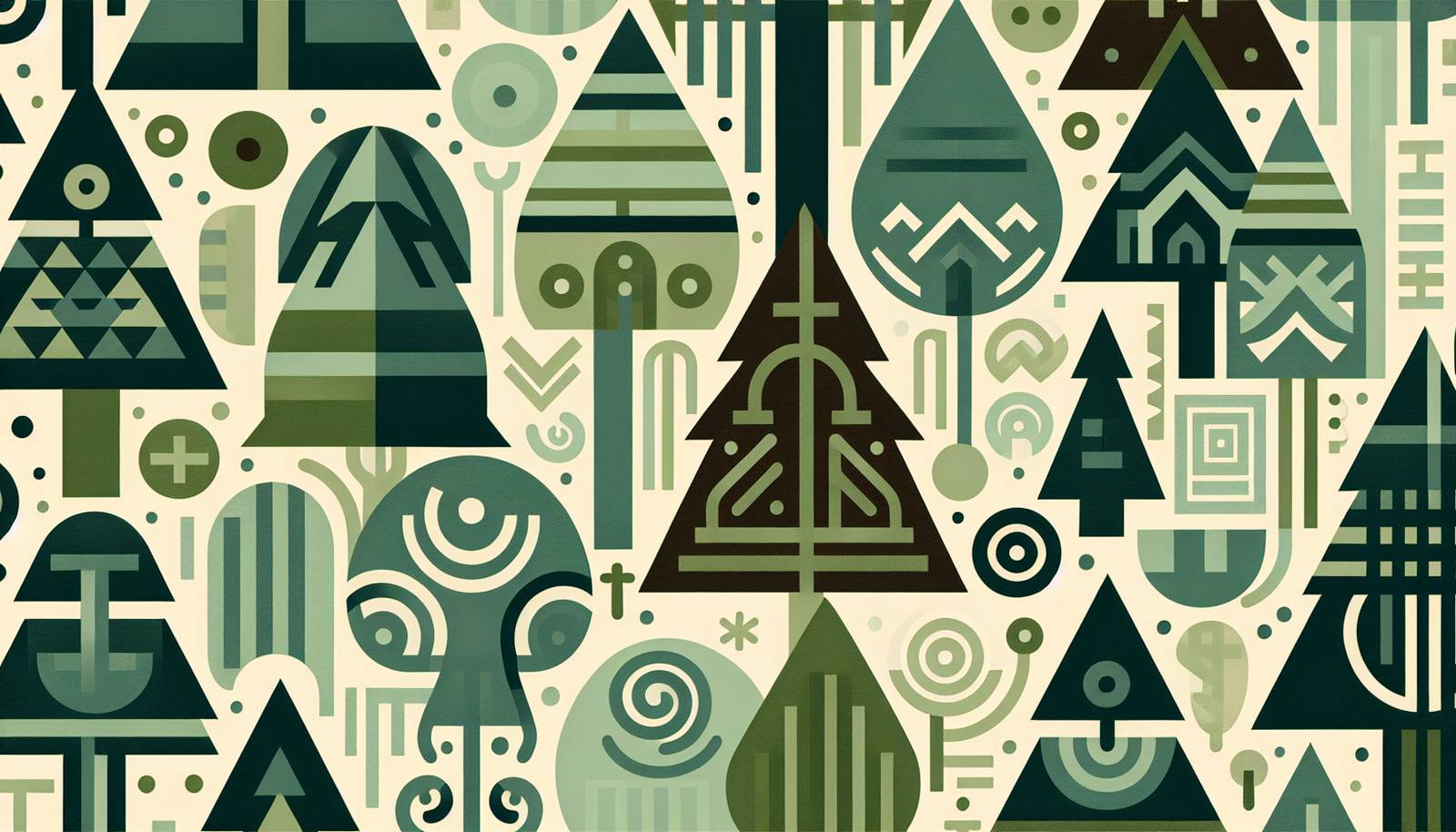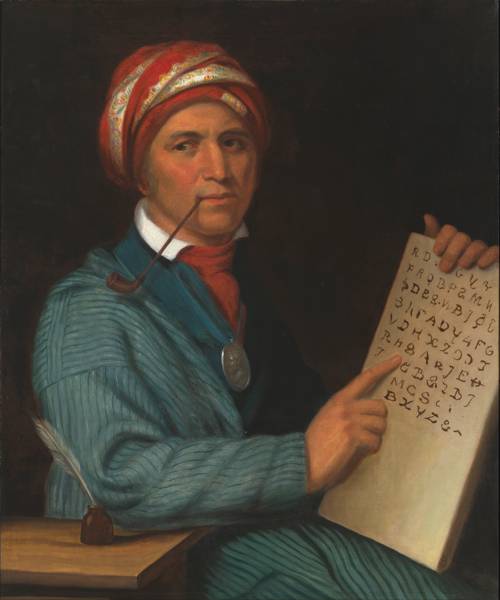
FAQ About Sequoyah

Who was Sequoyah?
Sequoyah was a Cherokee silversmith and inventor who is best known for creating the Cherokee syllabary, a system that transformed the Cherokee language into a written form. This was a significant advancement for the literacy and cultural preservation of the Cherokee people.

What is the Cherokee syllabary?
The Cherokee syllabary is a writing system developed by Sequoyah in the early 19th century. Unlike an alphabet where each symbol represents a sound, the syllabary uses symbols to represent syllables. There are 85 characters in the Cherokee syllabary, making it possible to write the Cherokee language fully.

When was the Cherokee syllabary created?
Sequoyah completed the Cherokee syllabary in 1821 after several years of development and experimentation. His work allowed the Cherokee nation to achieve high literacy rates quickly and facilitated better record keeping and communication.

How did Sequoyah develop the Cherokee syllabary?
Sequoyah developed the Cherokee syllabary through persistence and experimentation. Although he was illiterate in any language, Sequoyah understood the importance of written communication and sought to create a system for the Cherokee language that mirrored the clarity and utility of written English. His inspiration and dedication led to the creation of a functional syllabary made of symbols representing each syllable in Cherokee.

Why is the Cherokee syllabary important?
The Cherokee syllabary is important because it enabled widespread literacy among the Cherokee people at a time when literacy was limited among indigenous populations. It also played a crucial role in preserving Cherokee culture, facilitating documentation, and maintaining linguistic heritage.

Is the Cherokee syllabary still used today?
Yes, the Cherokee syllabary is still used today, both in cultural preservation and educational contexts. It is a vital part of language revitalization efforts and is taught in schools within Cherokee communities to maintain linguistic and cultural continuity.

How did the creation of the Cherokee syllabary affect the Cherokee community?
The introduction of the Cherokee syllabary led to a significant increase in literacy rates within the Cherokee community. It facilitated better communication, record-keeping, and inspired a Cherokee newspaper, The Cherokee Phoenix. This literary empowerment also aided in political organization and cultural pride.

What obstacles did Sequoyah face in creating the Cherokee syllabary?
Sequoyah faced skepticism from his community and the challenge of developing a written system for an unwritten language. Working alone without literacy in any other language, Sequoyah had to devise symbols that represented syllables in the Cherokee language purely through understanding the spoken word, which was unprecedented at the time.

Was Sequoyah honored for his contributions during his lifetime?
Yes, Sequoyah was honored and recognized for his contributions during his lifetime. The Cherokee Nation formally recognized his efforts by funding the publication of Cherokee language newspapers and books, which further solidified his syllabary's importance. He is a celebrated figure in Native American history.

What impact did Sequoyah's invention have on other Native American tribes?
While some other Native American tribes have worked to develop their own writing systems, Sequoyah's invention was unique for its time. His success inspired other indigenous communities to embrace literacy and take similar steps towards preserving their languages. However, none replicated his exact system, which was specialized for the Cherokee language.

Where did Sequoyah live?
Sequoyah was born in the present-day U.S. state of Tennessee, which was then part of Cherokee territory. Later in his life, he lived in various locations including Arkansas, Oklahoma, and Alabama, as the Cherokee people were relocated due to U.S. policies.

How is Sequoyah remembered today?
Sequoyah is remembered as a pioneering figure in literacy and cultural preservation in North America. He has been honored by having counties, schools, and parks named after him. The Sequoyah trees, more commonly known as Sequoia, are also said to bear his name, commemorating his lasting impact.

Did Sequoyah receive formal education?
Sequoyah did not receive formal education nor was he literate in any language other than his own when he created the syllabary. His achievement is all the more remarkable given that he was self-taught and solely relied on his understanding of spoken Cherokee.

What materials did Sequoyah use in his work?
Sequoyah initially used basic tools available to him as a silversmith to create symbols for the syllabary. He later worked with written and printed materials as the syllabary gained acceptance and started to be used for newspapers and official documents.

Did Sequoyah have any other accomplishments?
In addition to creating the Cherokee syllabary, Sequoyah was also known for his craftsmanship as a silversmith. He became an ambassador and statesman for the Cherokee Nation, helping to bridge relationships with other tribes and the American government through his understanding and multilingual abilities.

Why is Sequoyah sometimes spelled 'Sequoia'?
The spelling "Sequoia" reflects a version of his name that was popularized due to the association with the giant trees in California, "Sequoias," which were named in his honor. This naming helped cement his legacy in a way that was recognized beyond native communities.

How did people initially react to the Cherokee syllabary?
Initially, there was skepticism among the Cherokee people regarding the syllabary's effectiveness. However, as it proved successful in facilitating communication and education, it gained widespread acceptance and became a source of pride and empowerment for the Cherokee Nation.

What is known about Sequoyah's early life?
Sequoyah, also known as George Gist or Guess, was born circa 1770 near present-day Knoxville, Tennessee. There is limited documentation on his early life, but he was of mixed Cherokee and European descent. He showed great skill in crafts from an early age, which contributed to his later works.

Have any artifacts made by Sequoyah survived?
Few artifacts are directly attributed to Sequoyah. However, there are recorded examples of old syllabary prints and writings in museums and archives that are based on his original creation. These pieces are invaluable for understanding his work and its impact.

What was the Cherokee Phoenix?
The Cherokee Phoenix was the first newspaper published by Native Americans in the United States. Established in 1828, it was printed in both Cherokee and English, using the syllabary Sequoyah invented, serving as a critical tool for communication and cultural preservation among the Cherokee.
